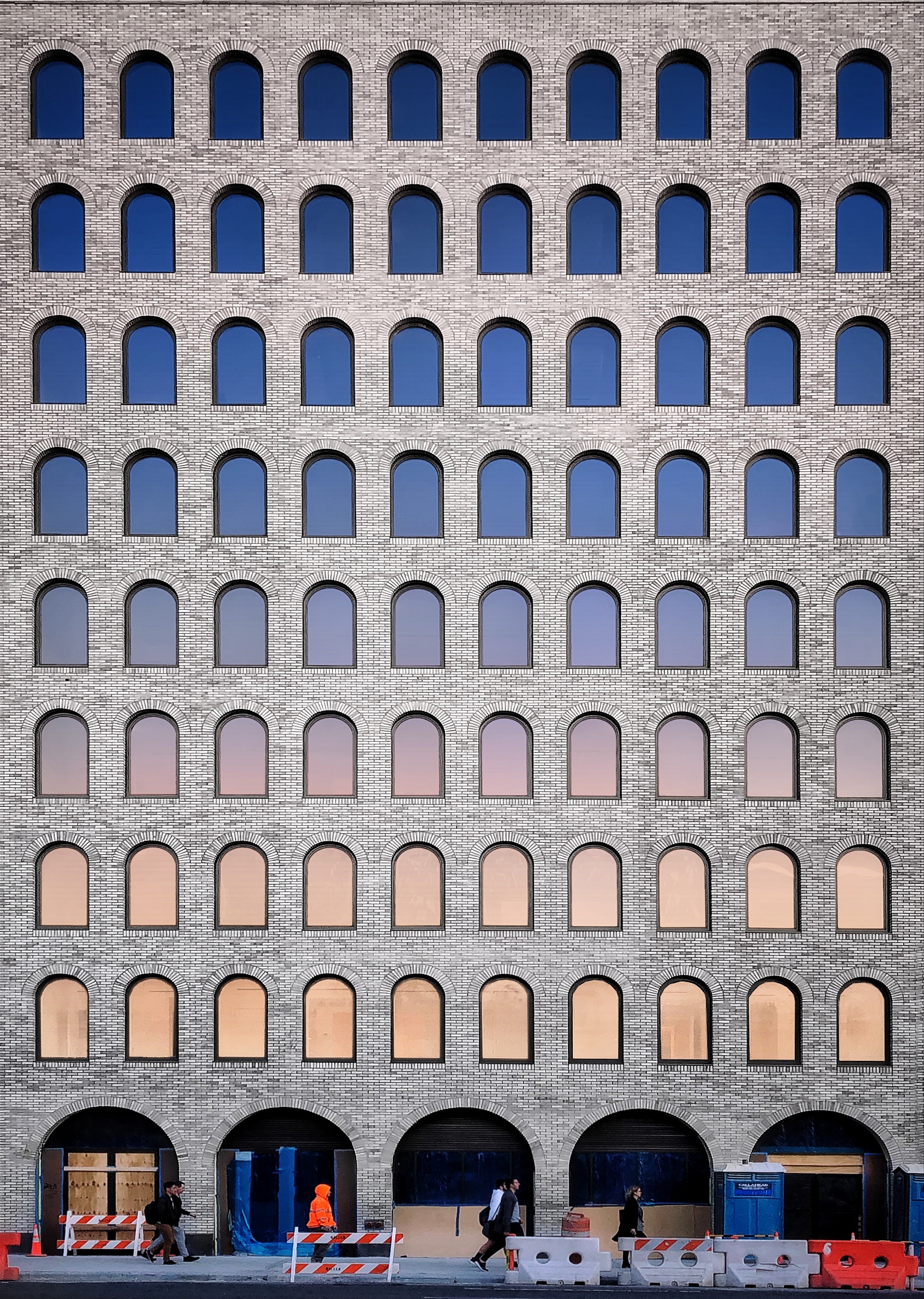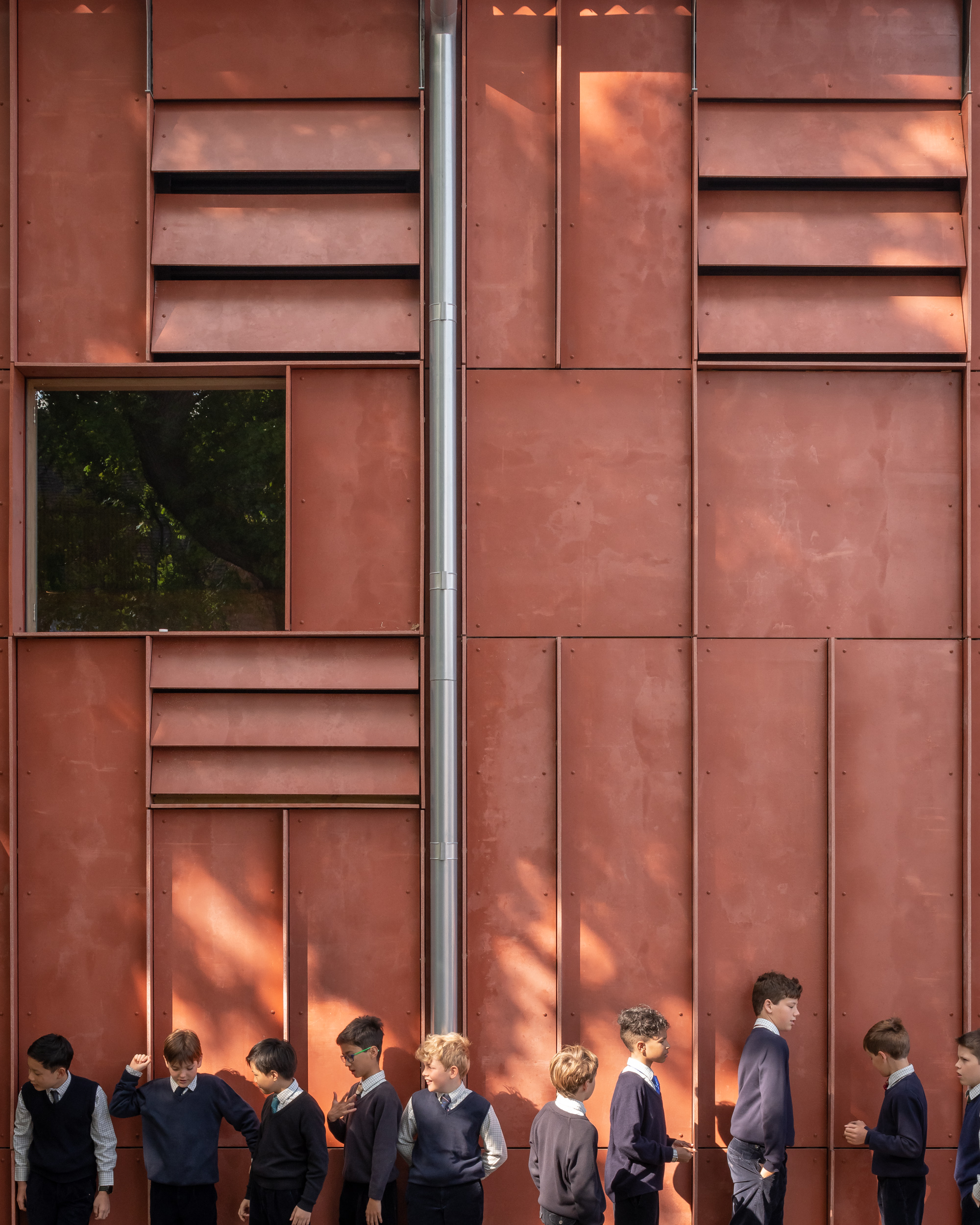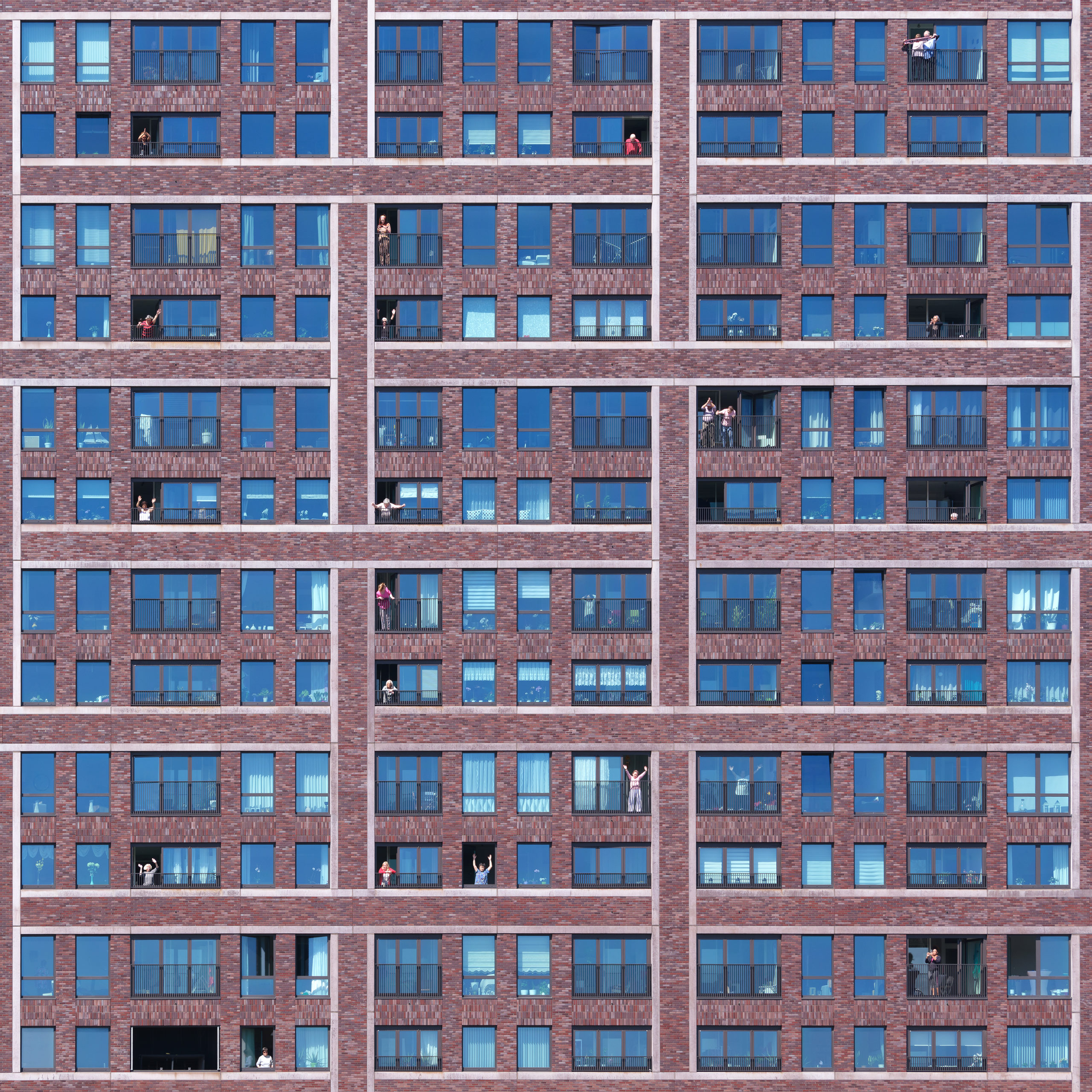The jury is deliberating over the winners of Architizer's 2025 Vision Awards. The world's best conceptual work and architectural representation will be revealed in our Vision Awards Newsletter.
Every angle that a building is viewed from tells a different story about how it was built or how it is used. Camera angles can turn short buildings into skyscrapers, create the illusion of larger spaces or establish context. This particular assortment includes a few finalists of 2021 One Photo Challenge that focus only on elevations or singular façades of buildings. This kind of image distills the volume of structures to a single picture plane, forcing viewers to hone in on the architectural details while also confronting the monotony of modern towers. Despite appearing simple at the first glance, when seen through a camera’s lens, the rhythmic repetition of façade patterns can be harnessed to evoke powerful emotions, to emphasize certain themes and to tell rich stories of the architecture and its place in society.

This photo is timed at a moment when the architecture becomes a screen that reflects the environment around. Every color of the sunset, which forms a seamless gradient when seen on its own, is broken down into different shades when reflected in the windows of this building, fading from warm peach to a rich blue. It almost seems like a wall of arched windows instead of a building. The commuters walk by without noticing the few minutes when the architecture and nature are in harmony. Liem said of this changing scene, “The top rows slowly flicker off, and one by one, each screen starts to turn black. My eyelids feel heavy. I walk home.”

The image above features the opening day of a new theatre at Horris Hill School in the UK, a project by Jonathan Tuckey Design. The frame shows students lining up to enter the new structure for the first time. Their excitement and hushed whispers as the teacher asks them to be quiet speaks of their anticipation to go in and attend their lesson. The photographic composition ensures that the panels on the structure’s exterior and the pupils are both given equal importance. There is something about way that the horizontal panels break up the monotony of vertical lines that echoes the playful personalities of the boys who still obediently stand in a row.
More art than architecture, this apartment complex near Malmö in Sweden stands proud and tall with hundreds of windows in different sizes and orientations. Its façade is broken up into different panels that are placed at angles. The eaves follow a similar language, making the building appear as if it is moving like waves in water. Some windows have brown frames, some hold plants and pots, and one lone window holds a “Hola” sign to greet all those who pass by it.
Six buildings in shades of pink and orange create an interwoven tapestry when see from the front. Given the beautiful beaches in the city of Fortaleza, Brazil, buildings often face the ocean to provide residents with stunning views of the blue waters. Each of the buildings has its own identity and yet, when put together, they are easy to confuse for one continuous unit with a fragmented façade. There is something magical about how the levels all align, despite them being located at different distances.
The pandemic pushed millions of people across the world to stay indoors and face months of isolation and loneliness. It was particularly harder for high-risk individuals and the elderly. During these tough times, people found newer ways to communicate and connect with their loved ones and neighbors. Residents from The Musa at Katendrecht Rotterdam in the Netherlands did so by coming out on their respective balconies and dancing together in what could be called a socially-distanced party.
The construction of a building is just the initial step in its lifecycle. Tall buildings with large windows also require a lot of maintenance to keep them looking impressive as years pass by. It is even more complicated when these glass planes incorporate different kinds of glazing to filter light, add privacy or conserve energy. One of the ways they can be cleaned is by having window cleaners suspended from a roof using a rope and a plank that acts as a chair. They systematically go from one window to another, pushing aside the risk factors of this task.
The photograph of the EDL (Electricité Du Liban) building in Beirut, Lebanon is both enthralling and evocative. The government building, which the photographer labels as a symbol of the country’s political corruption, was left damaged by the port explosion in 2020. Its façade was left in tatters – broken windows, hanging air conditioners, ripped wires and burnt walls. “Corruption also corrupted itself,” said Nasser of the image that was captured just a few minutes after the blast occurred.
The jury is deliberating over the winners of Architizer's 2025 Vision Awards. The world's best conceptual work and architectural representation will be revealed in our Vision Awards Newsletter.
